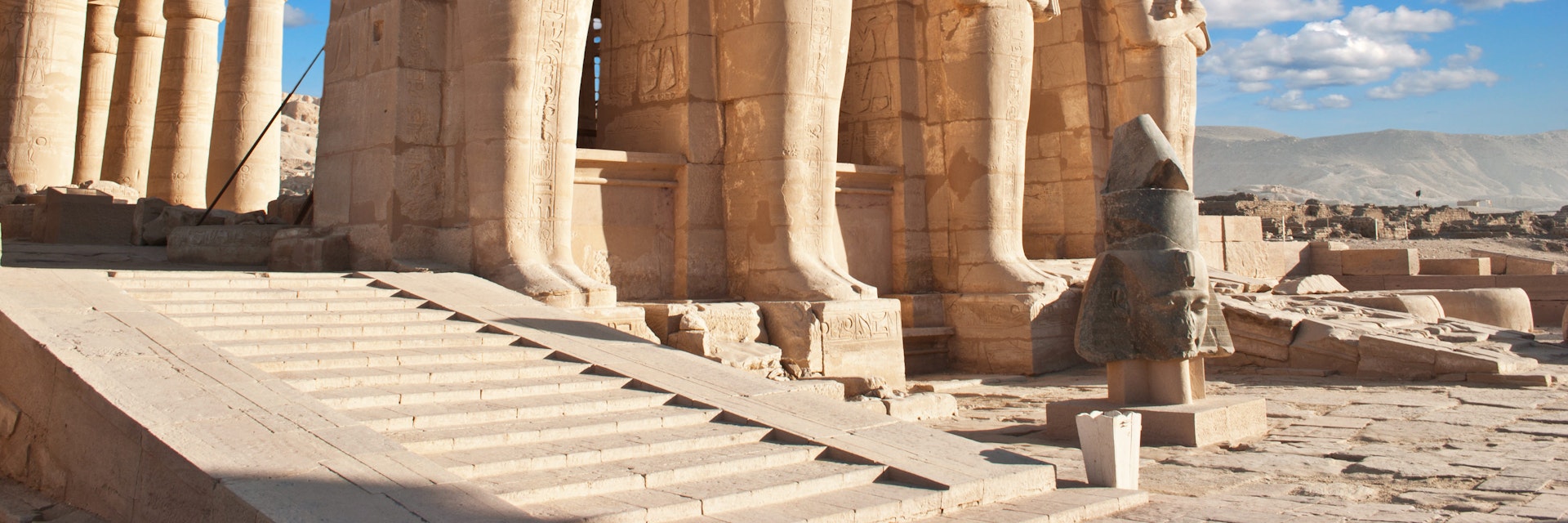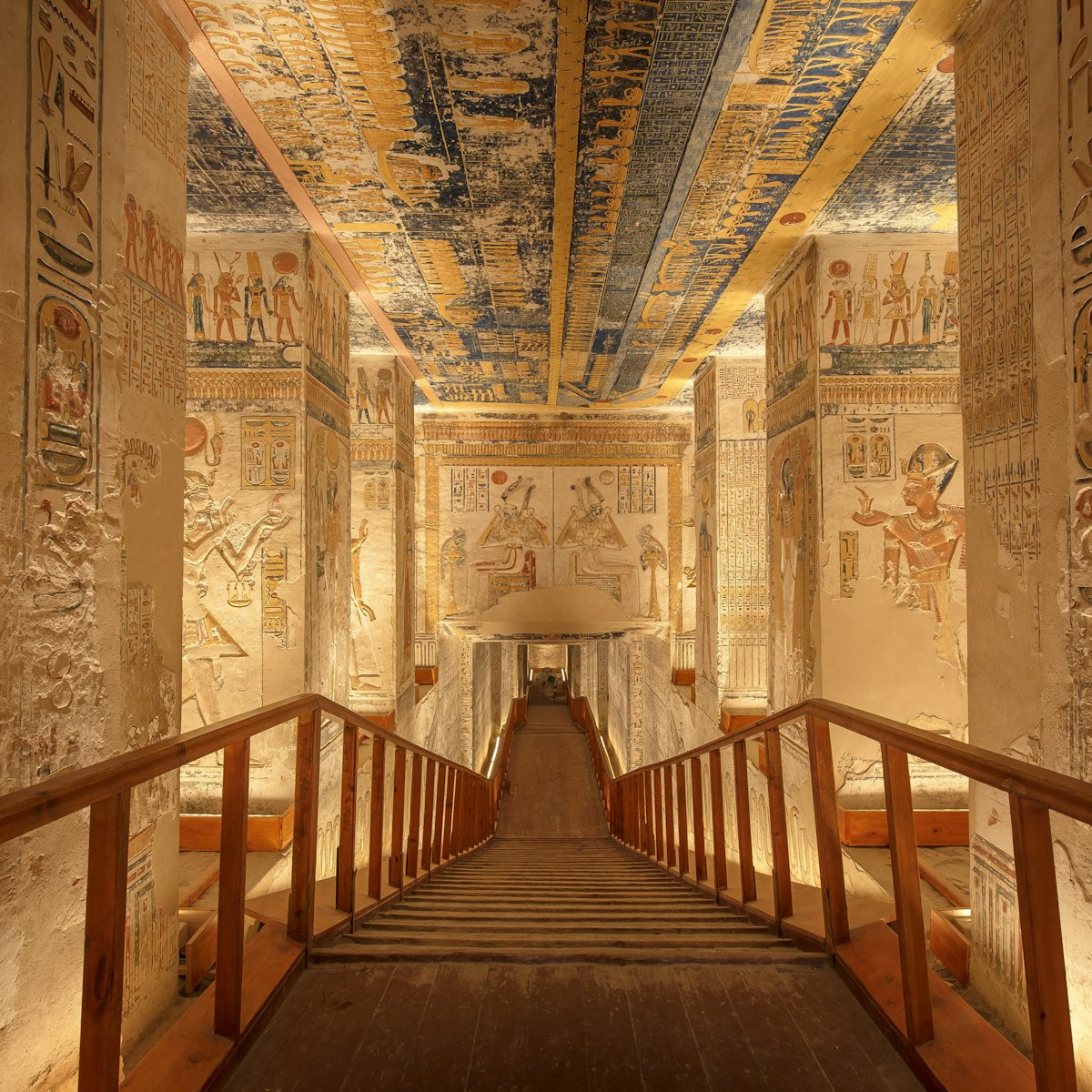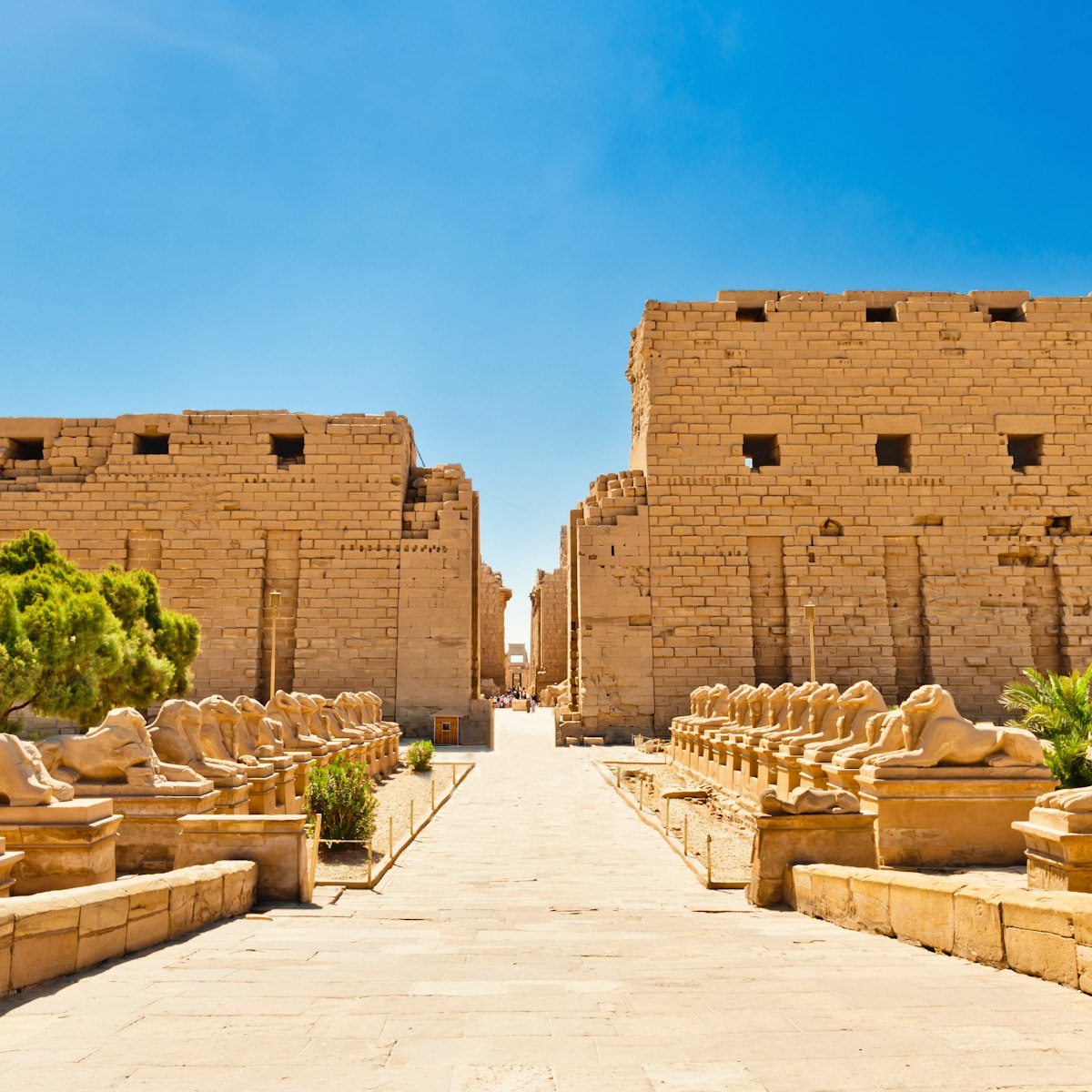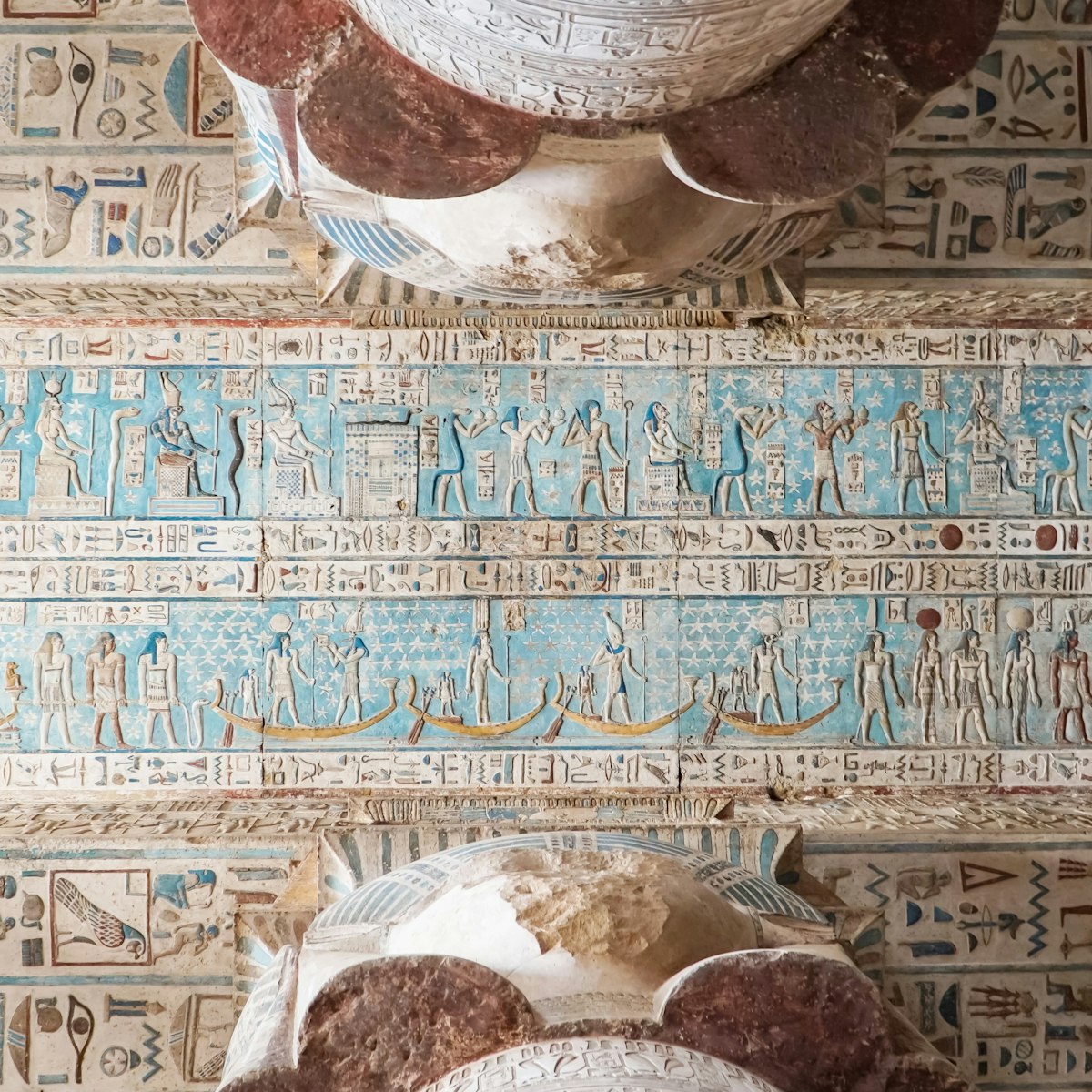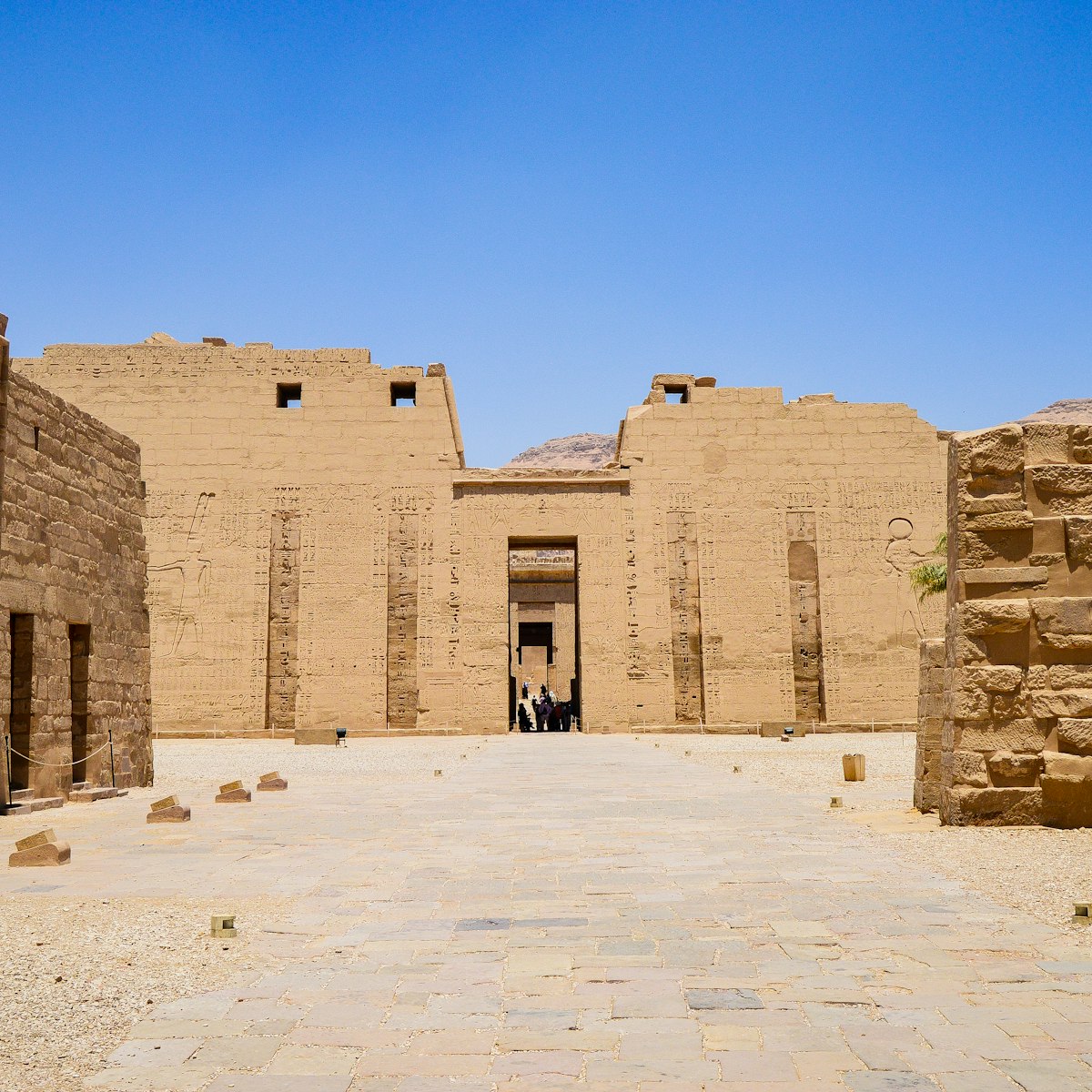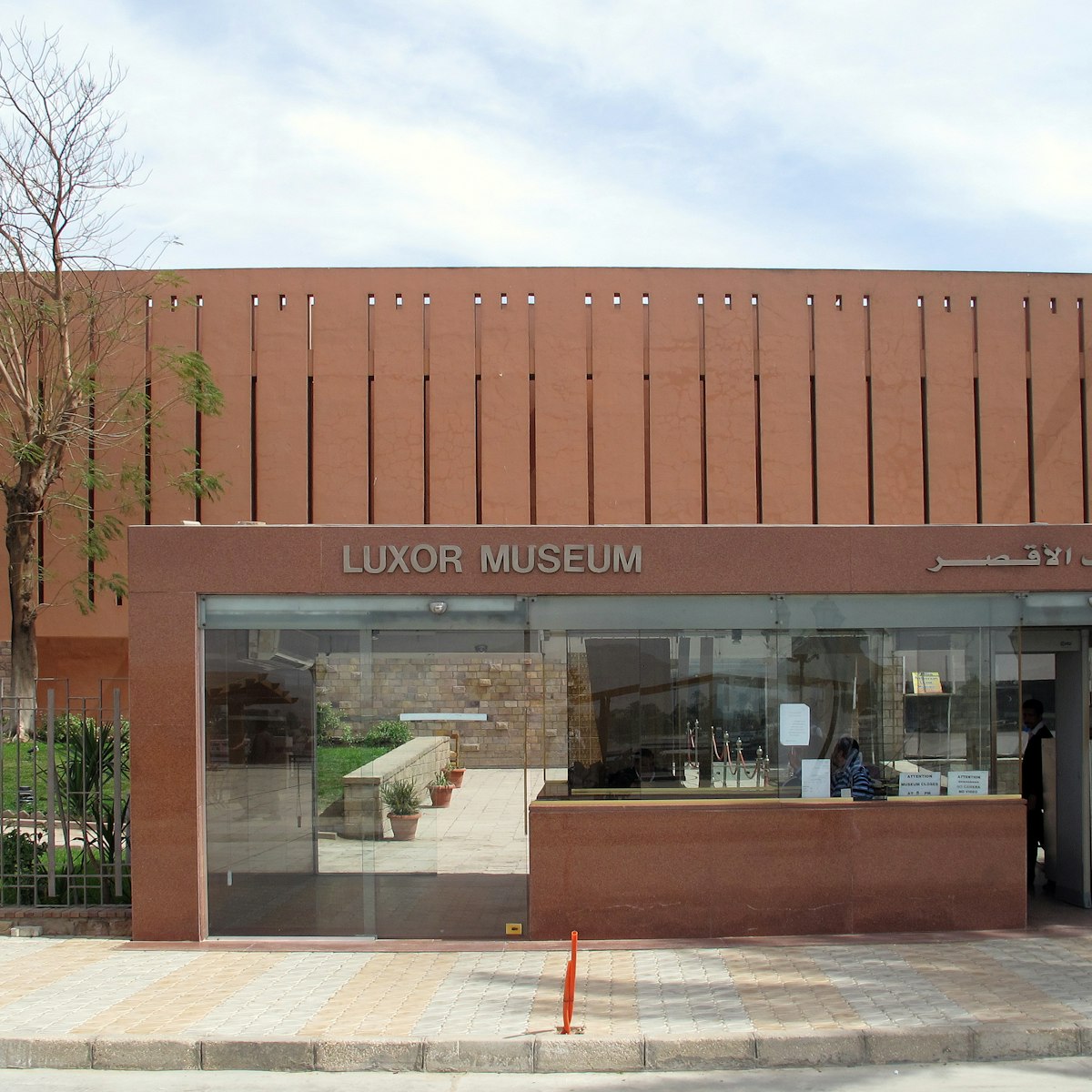Ramses II called his massive memorial ‘the Temple of Millions of Years of User-Maat-Ra’; classical visitors called it the tomb of Ozymandias; and Jean-François Champollion, who deciphered hieroglyphics, called it the Ramesseum. Like other memorial temples it was part of Ramses II’s funerary complex. His tomb was built deep in the hills, but his memorial temple was on the edge of the cultivated area on a canal that connected with the Nile and with other memorial temples.
Unlike the well-preserved structures that Ramses II built at Karnak and Abu Simbel, his memorial temple has not survived the times very well. It has been extensively restored, but is most famous for the scattered remains of fallen statues that inspired the poem ‘Ozymandias’, by English poet Shelley, using the undeniable fact of Ramses’ mortality to ridicule his aspirations to immortality.
Although more elaborate than many other temples, the layout of the Ramesseum is fairly orthodox, consisting of two courts, hypostyle halls, a sanctuary, accompanying chambers and storerooms. What is unusual is that the rectangular floor plan was altered to incorporate an older, smaller temple – that of Ramses II’s mother, Tuya – off to one side.
The entrance is through a doorway in the northeast corner of the enclosure wall, which leads into the second court, where one should turn left to the first pylon. The first and second pylons measure more than 60m across and feature reliefs of Ramses’ military exploits, particularly his battles against the Hittites. Through the first pylon are the ruins of the huge first court, including the double colonnade that fronted the royal palace.
Near the western stairs is part of the Colossus of Ramses II, the Ozymandias of Shelley’s poem, lying somewhat forlornly on the ground, where it once stood 17.5m tall. The head of another granite statue of Ramses II, one of a pair, lies in the second court. Twenty-nine of the original 48 columns of the great hypostyle hall are still standing. In the smaller hall behind it, the roof, which features astronomical hieroglyphs, is still in place. Some of the wall carvings, including one showing the pharaoh's name being inscribed on a leaf, are finely done.
